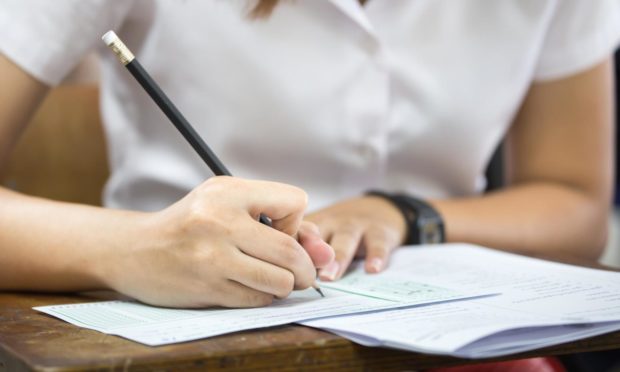With the confirmation that Higher and Advanced Higher exams will not take place next year, attention turns to how pupils’ results will be delivered.
Although it refers to National 5 qualifications, the new model is also expected to be adopted for Higher and Advanced Higher grades.
The process will be broken down into five stages, with schools and colleges expected to submit their provisional results by 28 May 2021. Final results are expected to be released on the 10 August.
Stage 1:
The first stage of the assessment process will take place from November 2020 to March 2021.
- This will involve teachers and lecturers accessing subject specific guidance, assessment resources and understanding standards materials.
- The learning and teaching of the curriculum will continue in schools and colleges, supported by local and national subject networks.
- Schools and colleges also gather evidence and support learners and provide feedback.
Stage 2:
This will take place from the end of January to the beginning of April next year.
- During this time, the SQA will request, review and provide feedback on samples of assessment evidence from each school and college. Learning and teaching in schools will continue.
- Schools and colleges will also start to develop provisional results based on the available evidence and feedback from SQA sampling.
- Schools, colleges or local authorities can engage in dialogue with SQA where further support is required.
Stage 3:
This will run from the end March to the 28 May 2021.
- Schools, colleges and local authorities will work through feedback and implement their own quality assurance of the provisional results.
- Pupils will continued to be support, with schools and colleges providing feedback on progress as supported by available evidence.
- Local authorities (where applicable) will engage with schools to carry out quality assurance checks.
Stage 4:
By 28 May 2021, schools and colleges across Scotland will have submitted quality assured provisional results.
Further information on how to submit the provisional results to SQA will be issued to schools and colleges nearer the time.
Stage 5:
This will take place during June 2021.
- The SQA will carry out national check of provisional results and discusses any issues with schools, colleges and local authorities
- The exam body may sample candidate evidence for final quality assurance.
- No candidate will have their grades adjusted unless the evidence has been checked and re-assessed by an SQA subject specialist.
- In instances where SQA subject specialists determine that assessment evidence is found not to support the standard, schools and colleges will be asked to resubmit provisional results that reflect the standard of the evidence so that certification can proceed.
“Fairness for learners”
This model, the SQA claims, means “young people will have the best chance of securing the outcomes that their efforts deserve.”
The exam body said: “The SQA is co-ordinating the development of an equality impact assessment as part of this quality assurance model which aims to ensure fair and credible results for all National 5 learners.
“Schools, colleges, local authorities and SQA are committed to working together to support teachers and lecturers in providing their provisional results in 2020-21.
“We will continue to discuss the appeals process for 2020-21 and will keep you informed of progress.”










